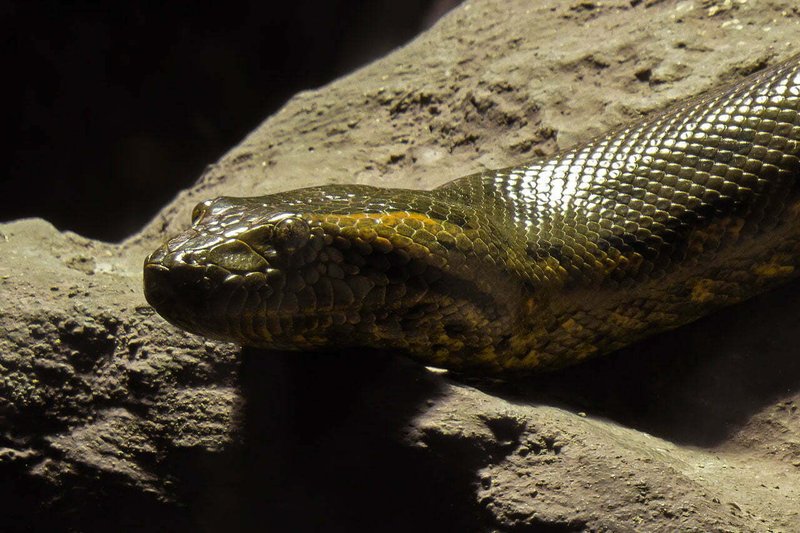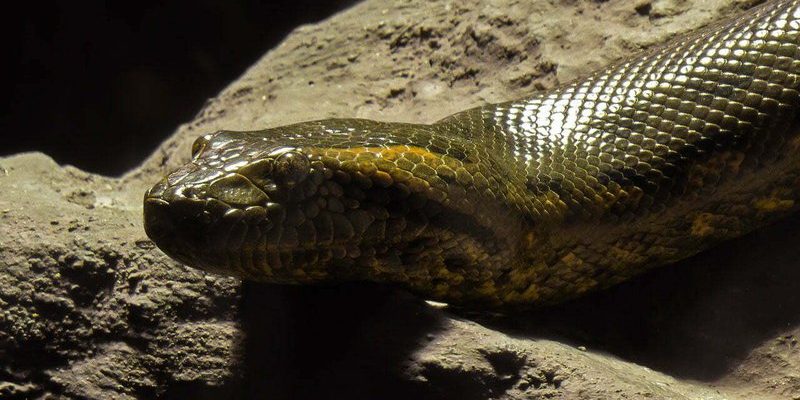
Imagine sitting by a riverbank, watching the sun dance on the water while a green anaconda slips silently below the surface. Its presence can stir feelings of awe, respect, and sometimes fear. The anaconda isn’t just a fascinating animal; it’s woven into the myths, stories, and beliefs of many communities. Let’s dive into why this creature holds such importance, exploring its cultural significance and symbolic meanings throughout history.
The Green Anaconda in Indigenous Mythology
Indigenous peoples of the Amazon have long revered the green anaconda in their stories and beliefs. In many tribes, the anaconda is seen as a guardian spirit of the waters. For example, the Amazonian tribes believe that the river and its inhabitants, including the anaconda, are interconnected. The anaconda serves as a symbol of power, often associated with fertility and strength.
Many tales depict the anaconda as a wise being, sometimes transforming into a human. One common story tells of a brave warrior who seeks the anaconda’s guidance on his quest, embodying the notion that wisdom can come from unexpected places. This relationship highlights how the green anaconda teaches respect for nature and its mysteries, connecting humans to the environment.
You might be wondering why these stories matter. Well, they illustrate how local cultures interpret their surroundings. The green anaconda, therefore, is not just a snake; it’s a vital piece of a larger narrative that emphasizes harmony between humans and nature.
Symbolism in Art and Literature
The green anaconda frequently appears in various forms of art and literature, symbolizing strength, mystery, and the primal forces of nature. In paintings, it’s often depicted winding through lush landscapes, its scales glimmering in the dappled sunlight. This portrayal evokes feelings of both allure and intimidation, capturing the complex relationship humans have with this creature.
In literature, the green anaconda often represents transformation and rebirth. Think about how snakes shed their skin and emerge renewed. Authors use this symbolism to explore themes of change and resilience. For instance, in stories where characters confront their fears, the anaconda might serve as a metaphor for overcoming obstacles or personal struggles.
This blend of beauty and danger in the symbolism of the green anaconda makes it a fascinating subject. It invites us to reflect on our own lives and challenges, inspiring us to embrace change and growth.
Role in Modern Culture
In contemporary society, the green anaconda continues to capture the imagination of many. This giant snake frequently pops up in movies, television shows, and documentaries, often depicted in thrilling adventures that showcase its incredible size and strength. Think about those nail-biting scenes where characters narrowly escape an anaconda’s grasp—it’s a powerful reminder of nature’s unpredictability.
Moreover, the green anaconda is a popular symbol in environmental discussions. As we become more aware of climate change and habitat destruction, the anaconda represents the need to protect our natural world. By highlighting the threats these magnificent creatures face, we galvanize efforts to conserve their habitats and promote biodiversity.
The anaconda’s role in culture is not just about drama or excitement; it’s a rallying cry for conservation and respect for our planet. This highlights how cultural symbols can evolve, taking on new meanings in a rapidly changing world.
Spiritual Significance of the Green Anaconda
In various spiritual practices, the green anaconda is considered a powerful totem. It is often associated with healing, transformation, and spiritual awakening. For many, encountering an anaconda in dreams or visions can signify a call for introspection and personal growth. It encourages individuals to delve deeper into their psyche, shedding old patterns and welcoming new insights.
Some shamanic traditions view the green anaconda as a spirit guide that helps navigate the subconscious. This connection to spirituality emphasizes the snake’s ability to inspire profound change. Just like the anaconda slithers through different terrains, it symbolizes the journey through life’s challenges and the wisdom gained along the way.
This aspect of the green anaconda serves as a reminder that spirituality can be found in the natural world, urging people to pay attention to the connections between themselves and the environment around them.
Environmental Importance of the Green Anaconda
Beyond symbolism and mythology, the green anaconda plays a crucial role in its ecosystem. As a top predator, it helps maintain the balance of species in its habitat. Its diet consists mainly of aquatic animals, including fish, birds, and even caimans. By controlling these populations, the anaconda supports the health of the ecosystem.
Unfortunately, the green anaconda faces threats from habitat destruction and hunting. As humans encroach on their territory, the delicate balance of their environment is disrupted. This situation stresses the importance of conservation efforts for the anaconda and its habitat, not just for the snake but for the entire ecosystem.
If we lose the green anaconda, we risk jeopardizing the intricate web of life in the Amazon. This issue underscores the need for collective action to protect and preserve these magnificent creatures and their homes.
The Green Anaconda in Popular Culture and Media
The green anaconda has made quite a splash in popular culture, especially in films and television series. Movies that feature rainforest adventures often include dramatic encounters with this snake, showcasing its imposing size and strength. It’s thrilling, right? These depictions have shaped public perception, making people both fascinated and fearful of this creature.
Television documentaries also play a role in educating viewers about the green anaconda. By showcasing their natural behavior and habitat, these programs help demystify the anaconda and promote a better understanding of its role in the ecosystem. They illustrate that the snake is not just a fearsome predator but also a vital part of the natural world.
Pop culture representations can influence public interest in wildlife conservation. When audiences are captivated by the green anaconda, they may be inspired to learn more about its habitat and contribute to conservation efforts. This connection between culture and wildlife highlights the importance of storytelling in fostering a deeper appreciation for nature.
The green anaconda is much more than just a snake; it’s a powerful symbol of strength, transformation, and connection to nature. Its importance in culture and symbolism spans from ancient myths to modern environmental discussions. By appreciating the rich narratives surrounding the anaconda, we can foster a greater understanding of our relationship with the natural world.
Whether it’s through stories, art, or conservation efforts, the green anaconda urges us to respect the environment and recognize the interconnectedness of all living beings. So, the next time you think of this magnificent creature, remember its cultural significance and the lessons it holds for us all. Let’s celebrate and protect the green anaconda’s legacy for generations to come.

